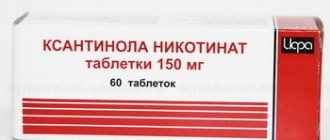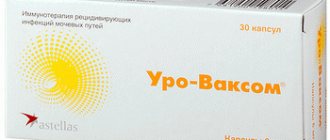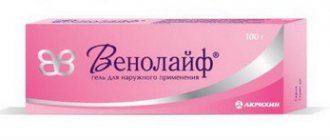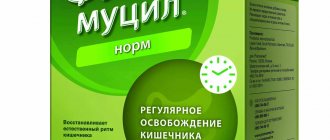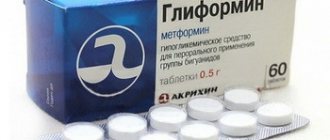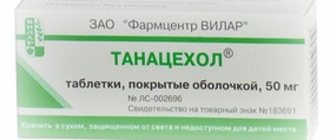Compound
Lindinet 30, reviews of which from women indicate its effectiveness, refers to monophasic oral contraceptives, in which each tablet contains a fixed dose of hormones, regardless of the day of the menstrual cycle.
1 tablet contains the following components:
- Main active substances:
- Ethinyl estradiol (30 mcg) is an artificial estrogen (a group of female sex hormones). It is able to regulate the menstrual cycle of women, as well as influence other processes - the formation of sexual characteristics, increasing blood clotting, and bone strength. It is part of many drugs intended for contraception and replenishing estrogen deficiency.
- Gestodene (75 mcg) is a progestin (a group of steroid hormones that are produced by the corpus luteum of the ovaries), obtained synthetically. In combination with ethinyl estradiol, it leads to a threefold increase in the concentration of proteins in the blood responsible for the binding and transmission of sex hormones. Has high selectivity. It is one of the most thoroughly studied third generation progestogens. It is more effective than the natural hormone progesterone.
- Excipients:
- sodium calcium edetate (0.065 mg) – complexing agent;
- magnesium stearate (0.2 mg) – filler (serves to increase the volume of the product);
- polysorb (0.275 mg) – a complexing agent that attaches hydroxyl groups;
- povidone (1.7 mg) – antiseptic;
- corn starch (15.5 mg) – a thickener used to form tablets;
- lactose monohydrate (37.15 mg) is a pharmacologically inactive excipient;
Lindinet 30
- Components of the shell:
- dyes;
- povidone;
- macrogol 6000 (polymer binder);
- talc (stabilizer);
- calcium carbonate – a component that protects against the effects of aggressive gastric juice;
- sucrose (19.66 mg) – sweetener.
How Lindinet 30 works
Contraceptive pills Lindinet 30 are a single-phase combined contraceptive. The contraceptive effect is provided by substances such as estradiol and gestodene. These are artificially produced hormonal substances.
The drug varies in dosage. So, today we are talking about Lindinet 30 - each tablet contains 30 mcg of estradiol. And in the Lindinet variation there are 20 - 20 mcg of this substance. Estradiol replaces natural estrogen in tablets.
Therefore, Lindinet 30 is more suitable for women whose estrogen levels are lower than necessary. Or male sex hormones are produced. Therefore, young girls who have not yet given birth drink Lindinet 30 more often. After childbirth, estrogen levels rise slightly.
Lindinet 30 operates as follows:
- The mucus in the area of the cervix becomes very viscous and does not allow the male sex cells to pass through;
- The inner uterine lining increases its density. The fertilized egg loses the ability to receive nutrients from the mother's body and dies.
In addition, Lindinet 30 has other positive effects:
- Prevents inflammatory processes of the uterus;
- It is a good prevention of cancer;
- Reduces the likelihood of pregnancy outside the uterus;
- Helps treat acne and oily scalp.
Mechanism of action
The drug belongs to the group of low-dose hormonal contraceptives. The mechanism of action on a woman’s body is as follows:
- Central nervous system:
- Suppression of the production of GnRH (gonadotropin-releasing hormone) in the hypothalamus, which affects ovarian function. This biologically active substance irritates receptors in the anterior pituitary gland, which promotes the release of the hormones FSH and LH. Its inhibition blocks FSH, reduces the activity of ovarian structures, and disrupts the maturation of follicles in the ovaries.
- Changes in the cycle of fluctuations in the concentration of estradiol in the blood plasma. As a result, the peak of LH (luteinizing hormone) does not occur in the middle of the cycle, as is usually the case. Since there are no mature follicles, ovulation does not occur.
- Ovaries:
- Reducing estrogen production by 2 times. The drop in hormone levels corresponds to the early follicular phase of the menstrual cycle.
- Reversible reduction in the size of the ovaries (their size corresponds to the volume during the postmenopausal period).
- Reverse development of follicles.
- Fallopian tubes, cervical canal:
- decreased peristalsis of the fallopian tubes;
- slowing down the passage of the egg through them;
- decrease in the concentration of sialic acid in the mucus of the cervical canal;
- the environment in which sperm move becomes more viscous, which prevents their penetration.
- Endometrium:
- contraceptive effect - impaired implantation of blastocytes (germinal vesicle) and reduced suitability of the endometrium for pregnancy;
- regression (reverse development) of the endometrium;
- transformation of the glands (they do not reach full development), atrophic changes;
- decidual transformation of stromal cells;
- abortive secretion in the epithelium;
- inhibition of the development of spiral arterioles that provide blood supply to the placenta, increased growth of the capillary network in the surface layer of the uterus.
Lindinet 30, reviews of which from women are mostly positive, has the following biological effects:
- blocking ovulation;
- binding of progesterone receptors;
- structural changes in the tissues of the uterus;
- delay of monthly bleeding, endometrial rejection.
In addition, the drug has a therapeutic effect:
- normalization of the monthly cycle;
- reduction of such adverse effects as heavy bleeding, pain during menstruation;
- reducing the risk of developing diseases of the internal genital organs, proliferative processes, endometrial hyperplasia, tumors, including malignant ones (with long-term use).
Some medical studies confirm that long-term use of contraceptives and childbirth significantly reduce the development of malignant processes in uterine tissue by 2 times.
Additional intake of progestogens also has a protective effect on the endometrium, reducing the risk of developing hyperplasia, which is often diagnosed during the premenopausal period, when hormonal changes in a woman’s body create favorable conditions for hyperplastic processes.
In this case, progestogens act indirectly - through estrogen receptors and the enzyme system, leading to the conversion of more active forms of estrogens into less active ones.
Pharmacokinetics and pharmacodynamics
The features of distribution in the body and removal from it of the main component of gestodene are the following:
- After entering the gastrointestinal tract, the substance is completely absorbed through the intestinal walls.
- Absorption capacity is 99%.
- The maximum concentration in the blood is reached 1 hour after administration. It is in the range of 2-4 ng/ml.
- When entering the endometrium through the bloodstream, gestodene binds to progesterone receptors, and its complex-forming ability is higher compared to testosterone receptors.
- In terms of its effects, it is as close as possible to natural progesterone compared to similar compounds. The selectivity index (the ratio of binding to progesterone and androgen receptors) is higher by 80 and 40% compared to progestogens of the first and second generations, respectively.
- It has virtually no androgenic effect (an increase in the concentration of male hormones, which can lead to the appearance of male characteristics - increased hair growth, sweating and other signs).
- The distribution of the substance is as follows: up to 2% is in the blood plasma (first fraction), up to 75% is in combination with proteins that bind sex hormones (second fraction). When the latter increases under the influence of ethinyl estradiol, the second fraction increases and the first decreases.
- When taking tablets regularly, by the 2nd half of the cycle the concentration of gestodene in the blood gradually increases and then a state of saturation occurs.
- Metabolism of the substance occurs in the liver, metabolic products are excreted mainly in the urine (about 60%) and through the intestines with feces (40%). The half-life (time required for the loss of half the pharmacological effect) of metabolites is 1 day. The average rate of purification of blood plasma from this substance is 0.9 ml per 1 minute. per 1 kg of weight.
The distribution and elimination of the second active component, ethinyl estradiol, is carried out as follows:
- After entering the gastrointestinal tract, rapid and almost complete absorption occurs.
- The maximum concentration in the blood is observed after 1-2 hours (30-80 picograms per 1 ml of blood serum).
- The bioavailability of the compound is about 60%. Its value decreases due to the fact that the substance undergoes biosynthetic changes in the liver.
- Binding to blood proteins occurs almost completely. This stimulates an increase in the level of globulins that bind sex hormones.
- A constant concentration in the blood is established 3-4 days after the start of systematic administration.
- Metabolism occurs in the liver. The half-life is approximately 1 day.
- Excretion of the substance is mainly through urine and bile (along with feces). The ratio of the amount of metabolites excreted via these pathways is 2:3.
Indications for use
Lindinet 30, the main purpose of which is to prevent the onset of unwanted pregnancy before it is planned or before menopause, according to reviews of women and doctors, helps eliminate other undesirable effects.
This drug is also used in the following cases:
- treatment of hyperplastic pathologies of the endometrium (including the atypical form);
- to prevent the development of cancer and benign tumors of the ovaries, endometrium, and colon;
- to reduce the risk of inflammatory pathologies of the pelvic organs, ectopic pregnancy, osteoporosis in postmenopause;
- in the complex treatment of diseases such as: severe pain in the lower abdomen during or before menstruation; disorders of uterine function, manifested by uterine bleeding; endometriosis; myoma; polycystic ovary syndrome; ovulatory syndrome;
- in girls - for the treatment of a condition in which endometrial hyperplasia, mastopathy, and pain in the mammary glands before menstruation are combined.
Pregnancy and abortion
Lindinet 30 is especially recommended if the pregnancy has been terminated. It makes no difference whether it is artificial or spontaneous. Hormones will help the female body get into shape. Moreover, you should start using the hormonal drug immediately after the pregnancy is terminated.
However, if the abortion occurred after the third month of pregnancy, you need to wait until your period and start taking it after that. By this time, the level of estrogen in the body of a pregnant woman is very high, and after termination of pregnancy it does not decrease immediately. Therefore, here the tablets should be taken according to the usual scheme.
After pregnancy, taking Lindinet 30 depends on whether you are breastfeeding your baby. If yes, then no hormonal drugs are allowed during this period. If not, then you need to wait for the first menstruation after pregnancy and proceed to using Lindinet 30.
Contraindications
This product should not be used in the following cases:
- individual sensitivity to components;
- moderate or severe hypertension (with blood pressure exceeding 160/100 mm Hg);
- tendency to thrombosis;
- violation of fat metabolism, accompanied by the accumulation of lipids in the body;
- diabetic angiopathy;
- heart valve dysfunction;
- vascular diseases;
- atrial fibrillation;
- smoking in women over 35 years of age (consuming more than 15 cigarettes in 1 day);
- the presence of the following pathologies in the patient in the past: acute cerebrovascular accident, ischemic heart disease (angina pectoris), myocardial infarction, embolism of blood vessels (including family cases of the disease), migraine accompanied by local neurological disorders - tremor, dizziness, loss of consciousness;
- pregnancy (or suspicion of it), lactation;
- postoperative period with forced loss of mobility for a long time;
- inflammation of the pancreas, accompanied by an increase in triglycerides in the blood;
- uterine bleeding for unknown reasons;
- hereditary syndromes: Rotor, Gilbert, Dabin-Johnson;
- severe pathologies of the hepatobiliary system - hepatitis, tumors, cholelithiasis, jaundice caused by deterioration of bile excretion or taking medications that contain hormones;
- the presence of malignant tumors, the growth of which depends on the influence of hormones.
This product can only be used under medical supervision, with a careful assessment of the possible risks, in the following cases:
- patients from the age group over 35 years;
- hypertension;
- active smoking;
- arrhythmia and heart valve defects;
- thrombosis, heart attack, stroke in the woman’s relatives;
- pathologies that were first diagnosed or worsened while taking hormones or after pregnancy;
- Quincke's edema in hereditary form;
- lipid metabolism disorders;
- hemoglobinopathies;
- systemic pathologies – hemolytic-uremic syndrome, lupus erythematosus;
- obesity degree I and above;
- diabetes;
- the period after the birth of the child (21 days for non-breastfeeding mothers and the entire lactation period for nursing mothers);
- recurrent headaches of moderate and high intensity;
- seizures;
- liver pathologies;
- varicose veins;
- severe injury or surgery;
- tendency to severe depression;
- inflammatory pathologies of the gastrointestinal tract (Crohn's disease, ulcerative colitis).
Side effects
Lindinet 30, reviews of which from women indicate that it is well tolerated, in rare cases causes side effects such as:
- allergy;
- increased blood pressure;
- acute blockage of a blood vessel by a thrombus, accompanied by complications of varying severity (stroke, heart attack, thrombosis of the veins in the legs, occlusion of the pulmonary, hepatic, renal and other arteries, retinal vessels, leading to disruption of blood flow and organ functions);
- increased symptoms of systemic lupus erythematosus;
- deterioration of hearing acuity, increased sensitivity of the cornea (when using contact lenses);
- development of candidiasis in the genitals, inflammation of the vagina;
- an acute condition characterized by the simultaneous occurrence of hemolytic anemia, thrombocytopenia and azotemia (manifested in the form of diarrhea with blood, abdominal pain, pale skin, petechiae, lack of urination, damage to the central nervous system, liver, pancreas and heart);
- porphyrin disease;
- changes in laboratory blood parameters characterizing the functioning of the liver and other internal organs;
- Central nervous system and mental disorders - headaches, migraines, changeable mood, depression;
- leakage of milk from the mammary glands not associated with lactation, chest pain;
- metabolic disorders - the appearance of swelling, weight gain, changes in glucose tolerance, increased concentrations of glucose or trigcerides in the blood;
- rheumatic chorea (convulsive muscle contractions);
- dermatological pathologies – inflammation of the skin and subcutaneous vessels, accompanied by the formation of nodules, papules, vesicles, erosions; the occurrence of hyperpigmentation; baldness;
- vaginal bleeding;
- gastrointestinal disorders - inflammation of the intestines, pain in the abdominal region, nausea and vomiting, stagnation of bile and stone formation in the gallbladder, jaundice, hepatitis, the appearance of tumors in the liver;
- absence of menstruation after stopping the medication.
Delay of menstruation
Combined hormonal contraceptives make it possible to do without even a semblance of menstruation. That is, if you take the pills in a certain way, even false menstruation in the form of bleeding will not follow.
To do this, you just need to give up a week's break in taking Lindinet 30. If you open a new pack immediately after the previous one, discharge will not occur. Which in certain situations can be a very convenient opportunity.
Think about what is more important to you – comfort or health. Hormone therapy not only greatly changes your body from the inside out, but also poses the risk of side effects. And with such a delay, the effect of the pills increases. As does the possibility of side effects.
When you start a new pack, finish it according to the diagram. It is highly discouraged to skip a break two or more times in a row. Before deciding to cancel your period, we recommend that you consult with your gynecologist.
Instructions for use
Dosage regimens, depending on the desired effect and characteristics of the condition, are given in the table below.
| Item No. | Features of the condition | What day should you start using the drug? | Description of the technique |
| 1 | Regular course, general scheme. | Days 1-5 of the monthly cycle. | Take 1 tablet for 21 days (at the same hours), until the package is completely used. After this, there is a week-long break (in this case, artificially induced menstruation occurs - the so-called “withdrawal bleeding”). After a 7-day break, continue taking. |
| 2 | Replacement of other types of combined contraceptives with this drug. | On the 1st day after the onset of “withdrawal bleeding”. | According to the previous scheme. |
| 3 | Replacing COCs that contain only progestogen with Lindinet. | At any period of the monthly cycle. | According to the previous scheme, during the first week additional methods of protection against pregnancy are required. |
| 4 | Artificial termination of pregnancy in the first trimester. | On the first day after surgery. | According to the general scheme. |
| 5 | Artificial termination of pregnancy (for medical reasons) or childbirth in the second trimester. | For 21-28 days. | In the first 7 days, additional methods of protection against pregnancy are needed. |
| 6 | Skipping a pill | In the near future. | If >12 hours have elapsed, then contraception is continued according to the general scheme, but for the next 7 days additional measures are needed to protect against conception. The rest follows the general scheme. |
| 7 | Missed tablet, less than 7 tablets left in box. | Take the next package without a week's break. | |
| 8 | Vomiting (diarrhea) occurred after taking the medicine for 4 hours. | See paragraphs. 6, 7. | |
| 9 | It is necessary to delay the onset of menstruation. | — | Reduce the break. In this case, spotting bleeding may occur (or breakthrough bleeding may appear in the middle of the cycle). |
If a pill is missed
If a woman forgets to take the pill, her hormone levels will drop. Accordingly, the likelihood of fertilization of the egg will increase. If less than twelve hours have passed since the missed time, simply take the missed dose of the hormonal drug. This needs to be done as quickly as possible. In this case, the contraceptive effect will not be affected.
If more than twelve hours have passed, you may need to additionally use other contraceptives. You still need to take the missed dose - even if you need to take 2 tablets at the same time. Further actions will be determined by how many days have passed since your period.
If no more than one week - approximately ten days after the missed period, it is worth taking additional protection. When a pill is missed during the second week of the cycle, you don’t have to worry at all, the hormonal levels at this moment are quite high. If this happens between 14 and 21 days after menstruation, you need to stop taking the usual break. And at the same time, still additionally use other contraceptives for the next ten days.
There is another method in case of a miss, the most optimal one. Here, instead of drinking two tablets, it is suggested that you finish the pack that you are drinking now. Just throw it away along with the remaining tablets and buy a new one. Take a break from Lindinet for 30 weeks, and then start taking tablets from a fresh pack according to the usual regimen.
special instructions
Lindinet 30, reviews of women and doctors about which indicate its good pharmacological effect, should be used taking into account certain features:
- Before starting treatment, you need to undergo a general and gynecological examination to exclude risk factors for side effects and pregnancy. Every six months it is necessary to carry out repeated examinations to monitor the state of health.
- Maximum pharmacological properties appear by the third week from the start of use, therefore, before reaching this period, it is recommended to use other (non-hormonal) methods to prevent conception.
- If the side effects described above occur, you should stop taking the pills and consult a doctor.
- If the patient suffered from viral hepatitis, then the drug can be used no earlier than six months after recovery.
- Hormonal contraception increases the risk of complications associated with blockage of blood vessels by blood clots. Among them, the most dangerous are stroke, ischemic necrosis of the heart muscle, thrombosis of the veins in the legs, and blockage of the pulmonary artery. Trigger factors include smoking, familial thromboembolism, patient age >35 years, metabolic disorders, hypertension, diabetes mellitus, extensive trauma and surgical interventions, the postpartum period, and inflammatory processes in the intestines. Therefore, the risk of complications and the advisability of choosing a contraceptive should be discussed with your doctor.
- This product is not used to protect against HIV infection and other sexually transmitted pathologies.
- Medical research shows that taking hormonal drugs is associated with an increased risk of breast, cervical and liver cancer in women. On the other hand, the drug has a protective effect against ovarian and endometrial cancer.
- Patients prone to skin hyperpigmentation should avoid direct sunlight and UV waves.
Useful tips
Lindinet 30 is based on the action of hormones. Therefore, you need to approach the drug with responsibility and caution. Do not choose a product just because it was recommended to you by women you know or online reviews.
Only a doctor can choose hormonal contraceptives for you. You yourself can only guess what your level of female or male hormones is. Blood tests will determine how much estrogen is within your normal range. Based on this, the type and brand of birth control pills will be selected.
Even though there are very clear recommendations when skipping a pill, it is still better not to skip it. Your cycle will remain more stable in this case. Set an alarm on your smartphone so you don't forget about your appointment. Place the pack where it won't get lost.
Drug interactions
The pharmacological effect of the drug is reduced when taking the following medications together:
- Antibiotics – Rifampicin, Ampicillin, Tetracycline. After completion of treatment with the first drug, additional protection with non-hormonal contraceptives is required for 1 month.
- Anticonvulsants, antiepileptic drugs: barbiturates – Phenobarbital, Cyclobarbital, Barbital, Primidone and others; Carbamazepine and its analogs, Phenytoin, Topiramate, Felbamate.
- Non-steroidal anti-inflammatory drugs – Phenylbutazone.
- Antifungal drugs – Griseofulvin. When taking all of the above medications, the use of additional contraceptives (condom or spermicidal gels) is required during the entire course of treatment + 1 week.
- Antiviral – Ritonavir.
- Drugs that increase intestinal motility (laxatives).
- Medicines containing the herb St. John's wort. Their use may cause breakthrough bleeding.
Medicines such as Itraconazole, Fluconazole (classified as antifungal agents) increase the level of active components in the blood.
Taking Lindinet affects the need for insulin and other medications used for diabetes, as well as Theophylline (used for respiratory diseases), Cyclosporine. Therefore, dosage adjustments of these medications may be necessary.
Analogs
Analogs in composition for this drug are the following (the average price is indicated in brackets):
- Lindinet-20 (560 rub.);
- Logest (1900 rub.);
- Femoden (740 rub.).
According to women's reviews, Lindinet 30 is a reliable contraceptive. According to medical research, the probability of conception within 12 months of systematic use is 5 cases per 10,000 patients.
It is necessary to take into account the moments at which the effectiveness of this drug may decrease and apply additional protective measures. If “withdrawal bleeding” does not occur, then the use of the tablets should be stopped and a medical examination should be performed to identify a possible pregnancy.
Prohibitions on taking the drug
Under what conditions should Lindinet 30 not be used? The use of this medicine is contraindicated:
- in the presence of thrombosis (including transient ischemic attack and angina);
- severe and multiple risk factors for arterial or venous thrombosis (including complicated lesions of the heart valves, atrial fibrillation, diseases of the coronary arteries of the blood vessels or brain, arterial hypertension);
- migraine with neurological focal symptoms;
- venous thromboembolism;
- diabetes mellitus (with angiopathy);
- arterial or venous thrombosis or thromboembolism (including heart attack, deep vein thrombosis of the leg, stroke, pulmonary embolism);
- surgery with prolonged immobilization;
- pancreatitis, which is accompanied by severe hypertriglyceridemia;
- dyslipidemia;
- jaundice when using GCS;
- severe liver diseases, cholestatic jaundice, hepatitis;
- cholelithiasis;
- liver tumors;
- Gilbert's syndrome, Dubin-Johnson syndrome, Rotor syndrome;
- severe itching, otosclerosis or its progression during previous pregnancy or taking corticosteroids;
- vaginal bleeding of unknown origin;
- malignant hormone-dependent neoplasms of the mammary glands and genital organs;
- smoking at the age of 35 years;
- hypersensitivity to the elements of the product.
Also, the drug should not be taken during pregnancy and breastfeeding.

